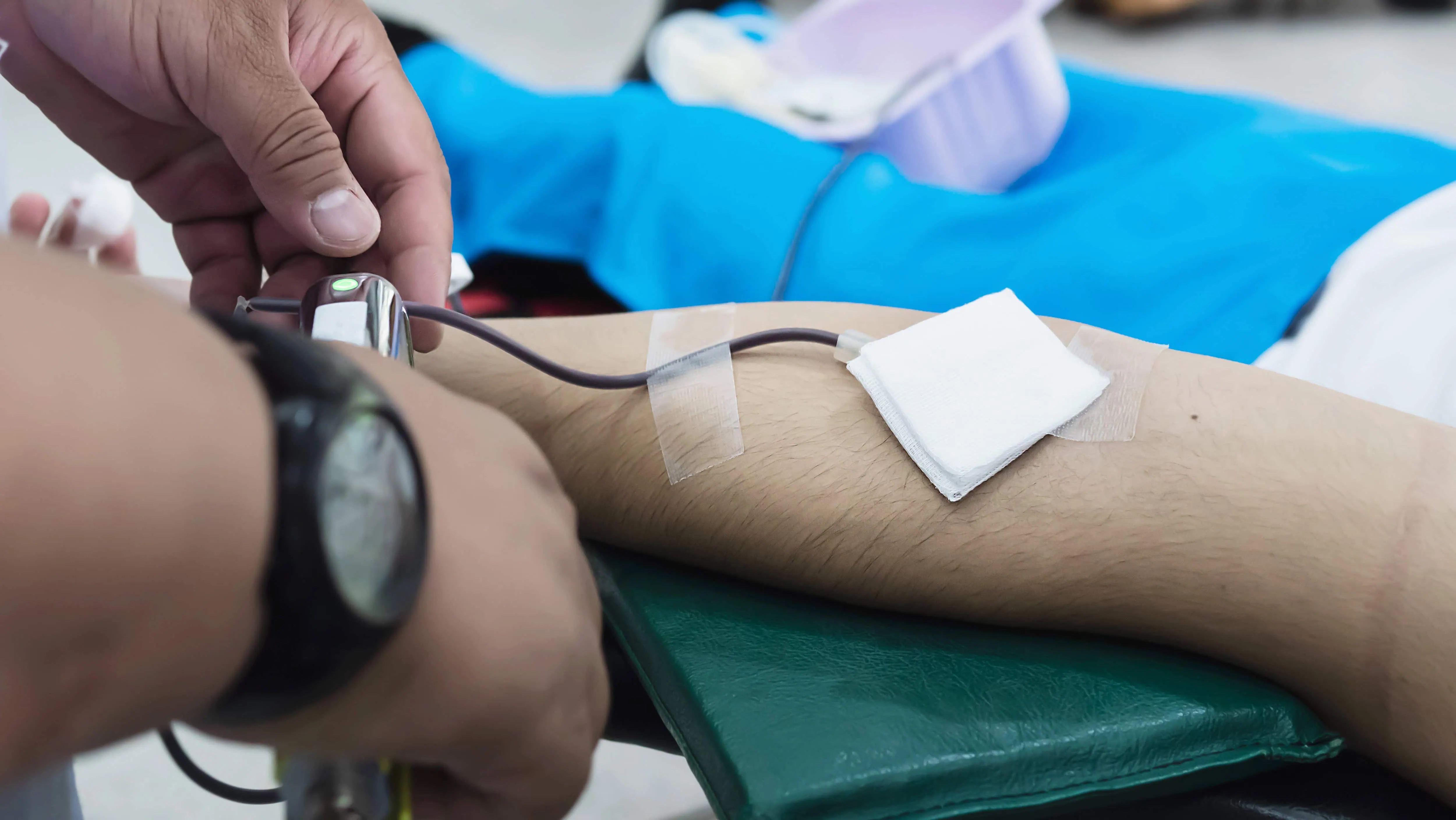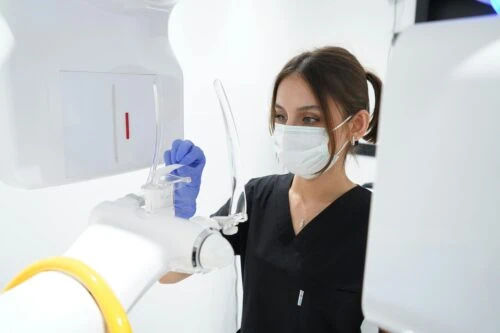Embarking on a career in phlebotomy offers more than just a job; it’s a chance to become a vital component of the healthcare system. This guide is designed for inspired individuals who are considering phlebotomy as a pathway to contribute meaningfully to patient care while embodying principles of diversity, equity, and inclusion (DEI).
Why Choose Phlebotomy?
Phlebotomy is a fast-growing medical field that is crucial in diagnostics and patient management. As a phlebotomist, you can impact patient experiences positively, ensuring comfort and safety during essential procedures like blood draws. This guide will walk you through everything you need to know about starting or advancing in your phlebotomy career. We’ve covered you from educational requirements to skill development, salary expectations, and the profession’s future outlook.
Whether you’re a high school graduate exploring options, a career switcher looking for a more fulfilling path, or an experienced professional aiming to enhance your skills, this guide is your comprehensive resource. Prepare to dive into a field that values and practices inclusion, where each step forward enriches your professional journey and contributes to broader health outcomes.
Educational Requirements for Phlebotomy
Acquiring the appropriate educational foundation is essential to embark on a career in phlebotomy. Phlebotomists are medical professionals who draw blood for tests, transfusions, research, or donations. Here’s what you need to know about the educational paths available and the prerequisites for becoming a certified phlebotomist.
High School Diploma or GED
Starting with the basics, you will need a high school diploma or a General Educational Development (GED) certificate. This is the first step before you can enroll in a phlebotomy training program.
Phlebotomy Training Programs
Community colleges, vocational schools, and technical institutes typically offer phlebotomy programs. These programs usually last from four to eight months and cover both theoretical and practical aspects of phlebotomy. Topics covered often include:
- Anatomy and physiology
- Blood collection techniques
- Safety and infection control
- Handling and transportation of specimens
Certification Requirements
While not all states require certification, obtaining a phlebotomy certification can enhance your job prospects and credibility. Several organizations offer phlebotomy certification, including:
- The American Society for Clinical Pathology (ASCP)
- The National Healthcareer Association (NHA)
- The American Medical Technologists
Certification typically requires completion of an accredited program and passing a standardized exam. It might also involve maintaining your certification through continuous education.
Continuing Education and Advancement
Continuing education is pivotal in staying updated in the field of phlebotomy. Professionals may need to complete continuing education units (CEUs) to renew their certifications regularly. By advancing your knowledge and skills, you open doors to supervisory roles or specialized areas within phlebotomy.
Becoming a phlebotomist requires a blend of formal education, hands-on training, and continuous learning. You can start a rewarding career in this essential healthcare field with the right training and certifications.
Areas of Expertise in Phlebotomy
Phlebotomy encompasses several specialized areas, each requiring specific skills and training. Knowing these areas can help aspiring phlebotomists choose their path and build proficiency that enhances their career prospects.
Types of Phlebotomy Specializations
Here are some of the key specializations within the field of phlebotomy:
- Hospital Phlebotomy: Phlebotomists in hospitals are responsible for drawing blood from patients of all ages, managing a high volume of patients, and often performing more complex blood draws, such as arterial sampling.
- Clinical Laboratory Phlebotomy: These professionals often work in private labs or hospital labs and focus on processing and analyzing blood samples.
- Blood Donation Centers: Phlebotomists who specialize in drawing blood for donations must be skilled at handling donors and managing large quantities of blood safely.
- Pediatric Phlebotomy: Working with children requires additional communication skills and techniques to facilitate cooperation among young patients.
- Geriatric Phlebotomy: Specializing in senior patients, these phlebotomists are trained to address the specific needs and health issues of older persons.
Required Skills for Specialization
Each area of specialization demands distinct skills beyond the fundamental phlebotomy techniques. For example, pediatric phlebotomists often require patience and gentle communication to reassure young patients and their families. Similarly, phlebotomists in geriatric care need to understand the complexities of conditions that affect older adults.
Advancing in Specialization
Phlebotomists seeking to specialize can benefit from additional certifications or training programs focusing on these areas. Organizations like the National Phlebotomy Association offer resources and certification for specialized fields within phlebotomy.
This knowledge of specialized areas helps in career advancement and enhances the quality of patient care. As you progress through your phlebotomy career, consider which specialization aligns best with your interests and skills.
Demographics in the United States
Understanding the demographics of phlebotomists in the United States highlights the diversity within this essential healthcare profession and illuminates the representation across different communities.
Gender and Age Distribution
Traditionally, the field of phlebotomy has seen a higher participation rate among women. However, recent years have noted an increasing number of men entering the profession. The age range in this field is wide, but most phlebotomists are between 20 to 40 years old. This trend indicates a dynamic workforce continually refreshed by younger entrants.
Cultural and Ethnic Diversity
Phlebotomy benefits from a culturally diverse workforce. With various backgrounds, phlebotomists bring unique perspectives and skills that enhance patient care, especially in communities with diverse populations. Employers often value linguistic skills and cultural competencies, which help deliver more personalized patient experiences.
Geographical Distribution
Phlebotomists are needed across the United States, but employment opportunities can vary significantly by region. Urban areas typically offer more jobs due to larger hospital systems and medical facilities. However, there is growing demand in rural areas with less concentrated medical services. This geographical spread ensures that trained phlebotomists have opportunities in various settings, reflecting their critical role in healthcare.
The diversity in demographics among phlebotomists enhances the profession and mirrors the broad spectrum of patients they serve. As the demand for healthcare services grows, so does the need for phlebotomists who understand and reflect the communities they serve.
Salary Trends for Phlebotomists
The salary of phlebotomists can vary based on several factors, including location, experience, and the type of facility where they work. Understanding these trends helps those entering the field to gauge potential earnings and set career goals.
Entry-Level Salaries
Starting salaries for phlebotomists are generally in the lower quintile of the healthcare profession, reflecting the entry-level nature and minimal education requirements. In the United States, entry-level phlebotomists can expect to earn approximately $25,000 to $30,000 annually. However, these numbers can vary based on state and local economic conditions.
Experienced Phlebotomist Salaries
With experience and additional certifications, salaries can increase significantly. Phlebotomists with five or more years of experience typically earn between $30,000 and $45,000 annually. Those who hold supervisory positions or work in specialized areas like neonatal care or clinical trial support may earn even higher salaries.
Influence of Geographical Location on Salaries
Salaries for phlebotomists also vary greatly across different regions. For instance, California and New York phlebotomists tend to earn more than their counterparts in other states due to higher local wages and living costs. In contrast, salaries in rural areas or smaller states might be lower but often come with a lower cost of living, balancing out the scales.
While phlebotomy may offer modest starting salaries, the potential for growth with experience and specialization is notable, making it a solid career choice for many looking to enter the healthcare industry.
Hiring Trends for Phlebotomists
The demand for phlebotomists remains robust, influenced by several key factors in the healthcare industry. Understanding these trends can help job seekers and those considering phlebotomy as a career.
Increasing Healthcare Needs
As the population ages, there is a growing need for medical services, including bloodwork. This trend is creating more job opportunities for phlebotomists. A steady rise in chronic diseases further amplifies this demand. Thus, phlebotomy remains a vital part of healthcare teams.
Technological Advancements
New technologies in medical testing and records management also influence hiring trends. Tech-savvy and adaptable phlebotomists are especially sought after because they ensure seamless integration of new technologies into daily practices.
Employment Statistics and Projections
According to the Bureau of Labor Statistics, employment of phlebotomists is projected to grow much faster than the average for all occupations over the next decade. Hospitals, diagnostic laboratories, and blood donor centers drive much of this growth.
Furthermore, job prospects are also influenced by the need for phlebotomists nationwide. Expansion in healthcare services in both urban and rural areas is creating more positions nationally.
Considering these factors, those interested in a phlebotomy career should stay informed and ready to adapt to changing job market demands. This proactive approach can significantly enhance their employment opportunities.
Education Levels in Phlebotomy
The diversity of educational backgrounds in phlebotomy underscores its accessibility and the varied pathways to this career.
Minimum Educational Requirements
Phlebotomists typically need a high school diploma or equivalent. This foundational education is crucial for understanding the basic principles underpinning further phlebotomy training.
Professional Training and Courses
After high school, aspiring phlebotomists often enroll in dedicated phlebotomy training programs. These courses, which can last from a few weeks to several months, cover vital topics including:
- Anatomy
- Physiology
- Phlebotomy techniques
- Laboratory safety
Post-secondary Education
While not mandatory, some phlebotomists may choose to pursue associate degrees or certificates in medical assisting or related fields. These programs offer deeper insights and more comprehensive training, which can enhance job prospects and preparedness.
Continuing education is also prevalent in phlebotomy. Healthcare institutions and professional bodies often offer workshops and seminars designed to keep phlebotomists up-to-date with the latest techniques and compliance regulations.
The diverse range of educational levels available ensures that phlebotomy is an accessible career option. It also allows professionals various avenues to advance and specialize in their field.
Skills in Demand for Phlebotomy
The phlebotomy field consistently evolves, and certain skills remain highly sought after by employers. Staying aware of these skills can significantly enhance a phlebotomist’s career prospects.
Technical Skills
Technical proficiency in blood collection techniques remains the core skill for any phlebotomist. This includes abilities in venipuncture, capillary puncture, and maintaining specimen integrity.
Soft Skills
Soft skills are equally critical in phlebotomy. Phlebotomists must possess excellent communication skills to interact with patients effectively and reduce their anxiety. Empathy, attention to detail, and the ability to work under pressure are also crucial.
Interpersonal Skills
Dealing with a diverse range of patients requires strong interpersonal skills. Phlebotomists must be sensitive to patient’s cultural and personal boundaries. Moreover, working well in a team is indispensable, especially in busy healthcare settings.
Adaptability and Continuous Learning
The healthcare sector is dynamic, with new technologies and procedures emerging regularly. Phlebotomists need to be adaptable, and engaging in continuous learning is vital. Taking part in additional training sessions and maintaining certification through continuing education courses are excellent ways to stay current.
Ultimately, developing a balance of technical and soft skills can significantly set a phlebotomist apart in the competitive healthcare market. Professionals who invest in their skills development are better equipped to advance in their careers and contribute positively to patient care.
Current & Future Phlebotomy Jobs Outlook
The outlook for phlebotomy jobs is promising, reflecting broader healthcare trends and demographic changes.
Current Job Market
The current demand for phlebotomists remains strong. Hospitals, diagnostic centers, and blood donation facilities continuously require skilled professionals to carry out critical tasks. The stability of this demand contributes to robust job security.
Future Projections
Looking ahead, the phlebotomy field is expected to grow. The Bureau of Labor Statistics projects an almost 17% increase in demand from 2019 to 2029, far outpacing many other occupations. An aging population and the resulting need for diagnostic testing drive this growth.
Technological Impact
Advancements in medical technology also play a role. While new tools enhance efficiency, they also require phlebotomists to adapt and learn. Phlebotomists who are well-versed in both traditional techniques and newer technologies will be especially valuable.
Geographic Variances
While opportunities are widespread, some regions may see higher demand based on population density and healthcare infrastructure. Urban areas, in particular, tend to offer more job openings.
This positive outlook is encouraging for current and future phlebotomists. Keeping your skills current and staying informed about industry innovations are key for those looking to enter and thrive in this field.
FAQs
What qualifications do I need to become a phlebotomist?
To become a phlebotomist, you typically need a high school diploma or GED, followed by a specialized training program for phlebotomy jobs. Certification, while not mandatory everywhere, is highly recommended and can enhance your job prospects.
How long does it take to become a certified phlebotomist?
Phlebotomy training programs can vary from several weeks to a few months. After completing a training program, you can sit for a certification exam. Overall, the process can take from about three months to one year.
What skills are essential for a phlebotomist?
Apart from technical skills in blood collection, phlebotomists need good communication skills, empathy, and the ability to work under pressure. Adapting to modern technologies and continual learning are also essential.
Is phlebotomy a safe career choice?
Phlebotomy is generally a safe career with proper safety protocols and training. Phlebotomists are trained in infection control and safely handling biohazard materials to minimize risks.
Can phlebotomists advance in their careers?
Yes, career advancement opportunities for phlebotomists include moving into supervisory roles, specializing in areas like pediatric or geriatric phlebotomy, or furthering education in other healthcare fields.
These questions cover the basics for anyone interested in starting or advancing a career in phlebotomy. The right training and approach makes it a field ripe with opportunity.
Conclusion
Phlebotomy jobs offer a promising career within the healthcare sector, characterized by stable demand and continual growth. From educational pathways to necessary skills and job outlook, aspiring phlebotomists have a clear roadmap for entering and excelling in this vital profession. The role requires technical precision, empathy, and ongoing learning, but it rewards practitioners with job security and opportunities to make meaningful contributions to patient care.
Take Your Next Step in Phlebotomy with Diversity Employment
If you are considering diversity inclusion positions in phlebotomy or looking to advance in your current position, joining Diversity Employment can be your strategic move. Our platform connects you with job opportunities and supports your journey with resources designed to enhance your career development.




